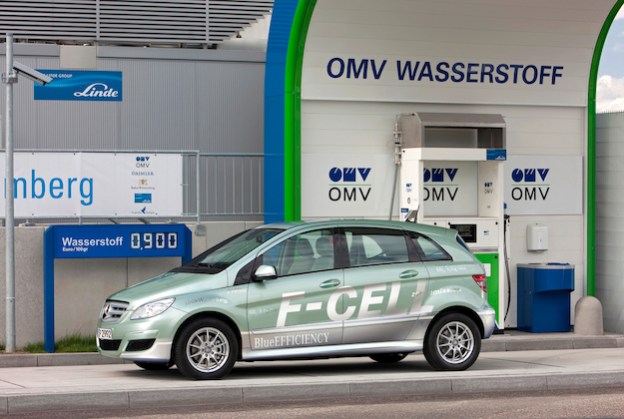It sounds like the end of 1985 classic Back to the Future where Doc Brown powers his time machine from some trash, thanks to a contraption called “Mr. Fusion.” But apparently it’s not science fiction.
Swedish researchers at Lund University have apparently developed a method for creating hydrogen, which could be used to power cars in the near future, from the ash of burned trash.
It’s commonplace in Europe, apparently, for people to burn their trash. What’s left is – as you might guess – lots of ash. This ash is collected and dumped much like unburned trash is here in the U.S.
Researchers use this trash ash to create hydrogen: “The technique involves placing the ash in an oxygen-free environment. The ash is dampened with water, whereupon it forms hydrogen gas. The gas is sucked up through pipes and stored in tanks,” according to a Domesticfuel report.
This breakthrough could be the silver bullet humanity has been looking for, in terms of hydrogen creation. As it stands, we have several ways of creating the elusive fuel, but none is without its negatives. Mostly, generating hydrogen is extremely energy-intensive. This new Lund University method, however, could harness the energy already contained within our garbage.
Many automakers see hydrogen electric powertrains as one of the leading technologies for the automotive future, as hydrogen cars’ tailpipe emissions consist solely of earth-friendly water vapor.
Recently, Hyundai unveiled the first production hydrogen-powered car, the ix35. Earlier this year, Toyota and BMW penned an agreement to work together on the development of a hydrogen fuel cell car.
The only issue, as we see it, is that the trash burning releases most of the CO2 contained within the trash all at once, rather than over hundreds of years as it decomposes after being dumped unburned. While driving hydrogen cars could help lower car-created CO2, trash burning could more than supplant those gains.
Editors' Recommendations
- Hyundai bets big on hydrogen from sewage, plastic
- Hydrogen was the fuel of tomorrow, so what happened?
- Toyota uses hydrogen fuel cells to power one of its Japanese factories
- Hyundai Nexo is the first fuel-cell vehicle crash-tested by the IIHS
- BMW may finally be ready to sell hydrogen fuel cell cars to the public



